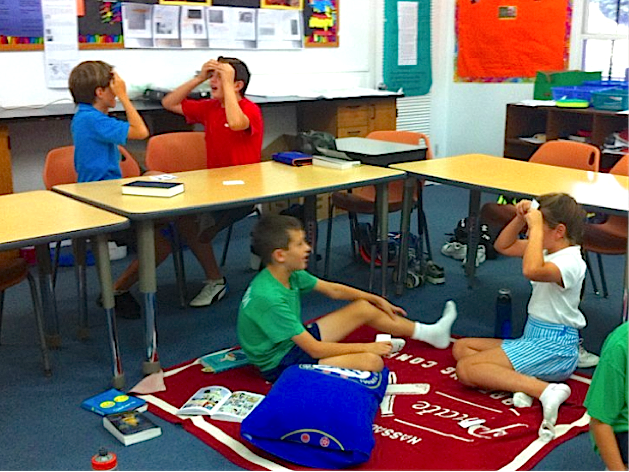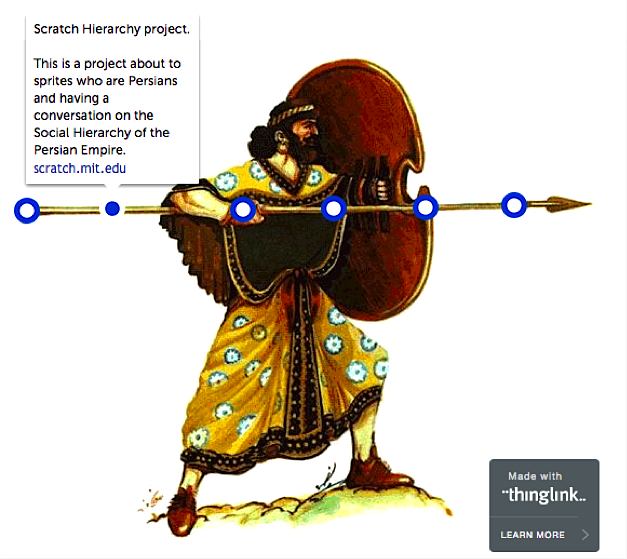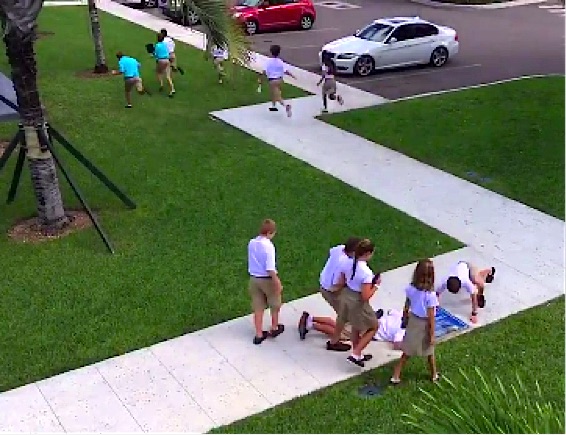11 Kid-Friendly Ways to Review for Assessments
A MiddleWeb Blog

Regardless of a school’s policies, the end of the year is a time for reflection, reviewing what students have learned, and allowing them the opportunity to share their knowledge. So let’s make it fun, whatever your constraints may be.
Here are 11 different ways to review for assessments. I hope that they spark some ideas for you to incorporate into the final days with your class.
Get hands-on
► Do you have tons of plastic Easter eggs in storage? Break them out for test review. Give small groups a set of eggs with Post-its inside them. On the paper you can write definitions to academic vocabulary words or math problems that you’ve posted around the room. Have one person in each group be the ‘runner’ who posts their answer with the question. Make it even more fun by assigning each group a color of egg and hiding the eggs around the room for them to find.
► Inspired by David Theriault’s suggestion that every teacher have an analog “maker kit,” provide students with materials and let them be creative around review questions. Break out the glue sticks, markers, and colored paper; pre-cut some magazine images and have other image sources available for students to cut up and use. Post a question – you could even post a question from the actual assessment if it’s one of your own – and see how students respond artistically.
► Students can write a different Post-it with everything they know about different topics. Group Post-its around the room by topic and have small groups of students read them together and compile a list of facts and questions about the topic. There will probably be some disputes over accuracy, which can lead to clarifying conversations and a greater understanding for everyone.

Students play “Heads Up” with vocabulary words.
► Most subject areas have vocabulary words that students should use in their assessments. Play “Heads Up” as a way to review them: write the words on index cards, one word per card. Students then pair up and one player holds a card on her forehead without looking at the vocabulary term, and the other student needs to define or explain the word (without ever saying it) until the student with the card on her head guesses it. Set a time limit and challenge them to improve upon their results. This is a fast and fun way to start every review session.
Surrender the bulletin boards
► You’ll need to strip the bulletin boards at the end of the year anyway, so clear them off early and let the students use them for review. You can dedicate space to questions like, “What do you hope is on the exam?” and “What do you hope is not on the exam?” This can give you insight on concepts that need more review throughout the week. It would be very empowering for a student to move a once-daunting idea to the “go ahead and ask me” board you set up.
► Have students illustrate vocabulary words or key concepts from a unit and post them on the board. Seeing other students’ visualizations can help cement understanding.
► Use bulletin boards to set study goals. Students can write S.M.A.R.T. goals on Post-its and use the board to keep themselves accountable. These goals could be statements like “practice my speech twice at home,” “doe ten practice math problems a night,” or “review Spanish conjugations for 30 minutes a day.”
Incorporate technology
► Last year, I wrote about using GIFs to enhance your students’ learning. As you make study guides for assessments, students could create different GIFs for vocabulary words or concepts from the unit. Is there a topic that nobody chooses? Work together as a class to figure out the best way to express the idea. This extra attention paid to a challenging concept will pay off in the assessment.

A student’s ThingLink portfolio on his ancient civilizations project. Each circle is a link to his work.
► I’ve used ThingLink as a way for students to create a portfolio on a topic, with an image containing links to their work. ThingLink can also be used to review by providing students with an image like a historical scene or an animal cell. They can then add links to information on that topic, create notes, and add videos.
► Share a document with a link to everyone’s ThingLink, and students have a wealth of information to review on your assessment topics. I also like what Venetia Ricchio has done to combine ThingLink with a BreakOutEDU game. I’ve written for MiddleWeb about how to stage a breakout game in your classroom; this is the ideal review activity because students are engaged and motivated to learn.
► Send students on a scavenger hunt using the GooseChase app, which is designed for educational settings. Teachers can create challenges for students, who can work in groups with a single device to submit responses by photo, video, or text.
My students have done scavenger hunts to review vocabulary words. Examples: take a photo of somewhere that could be considered a haven (hooray for the group who photographed the library); capture a video of something abstract. Math teachers can have students discover geometric shapes in the wild or use real objects to demonstrate an understanding of perimeter and volume.
Make your final days full of fun and inquiry
I want my final days with my students to be as filled with exploration, fun, and inquiry as the months that came before. By reviewing for assessments in a novel way, I can honor our time together and help prepare them for year-end summative tasks. Please share in the comments if you have other creative ideas for exam and assessment prep.































